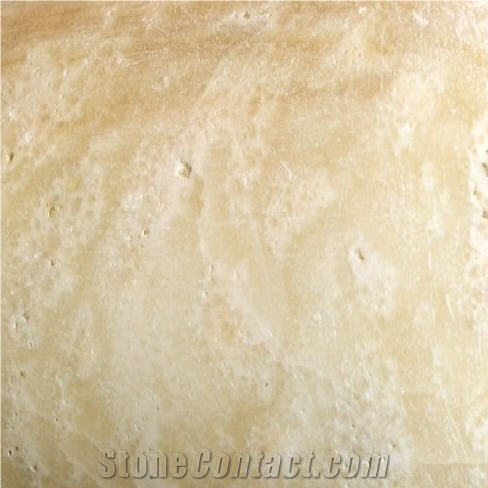Egyptian Beige Alabaster
 Egypt
Egypt
Egyptian Beige Alabaster is a kind of golden beige alabaster quarried in Egypt. This stone is especially good for Mosaic, ornamental stone, artifacts, sinks and other design projects. It also called Egyptian Honey Alabaster . Egyptian Beige Alabaster can be processed into Polished, Sawn Cut, Honed and so on.

Can Egyptian Beige Alabaster be used outdoors?

Can Egyptian Beige Alabaster be used exterior applications in hot climates?

How thick is Egyptian Beige Alabaster slabs?

Can Egyptian Beige Alabaster be used in a office?

Is Egyptian Beige Alabaster an expensive stone?

Are there color variations of Egyptian Beige Alabaster?

What is the coefficient of friction of Filled Egyptian Beige Alabaster tiles?

Can Egyptian Beige Alabaster be used in landscaping?

What grade is Egyptian Beige Alabaster?
-

 Egypt
Egypt
 3YRDiamond members are premium members on platform, providing members with comprehensive approach to promoting their products, increasing products exposure and investment return to maximize.
3YRDiamond members are premium members on platform, providing members with comprehensive approach to promoting their products, increasing products exposure and investment return to maximize.
 Verified Supplier is for prove company authenticity,including business license,trade license and effective office space,to enhance buyers' trust to suppliers and their products, reducing communication costs.
Verified Supplier is for prove company authenticity,including business license,trade license and effective office space,to enhance buyers' trust to suppliers and their products, reducing communication costs.
Contact Supplier
-

Mega Trade Misr for Marble & Granite
 Egypt
Egypt
 Verified Supplier is for prove company authenticity,including business license,trade license and effective office space,to enhance buyers' trust to suppliers and their products, reducing communication costs.
Verified Supplier is for prove company authenticity,including business license,trade license and effective office space,to enhance buyers' trust to suppliers and their products, reducing communication costs.
Contact Supplier
-

ALETIHAD FOR MARBLE AND GRANITE
 Egypt
Egypt
 Verified Supplier is for prove company authenticity,including business license,trade license and effective office space,to enhance buyers' trust to suppliers and their products, reducing communication costs.
Verified Supplier is for prove company authenticity,including business license,trade license and effective office space,to enhance buyers' trust to suppliers and their products, reducing communication costs.
Contact Supplier
-

ALETIHAD FOR MARBLE AND GRANITE
 Egypt
Egypt
 Verified Supplier is for prove company authenticity,including business license,trade license and effective office space,to enhance buyers' trust to suppliers and their products, reducing communication costs.
Verified Supplier is for prove company authenticity,including business license,trade license and effective office space,to enhance buyers' trust to suppliers and their products, reducing communication costs.
Contact Supplier
-

ALETIHAD FOR MARBLE AND GRANITE
 Egypt
Egypt
 Verified Supplier is for prove company authenticity,including business license,trade license and effective office space,to enhance buyers' trust to suppliers and their products, reducing communication costs.
Verified Supplier is for prove company authenticity,including business license,trade license and effective office space,to enhance buyers' trust to suppliers and their products, reducing communication costs.
Contact Supplier
-

ALETIHAD FOR MARBLE AND GRANITE
 Egypt
Egypt
 Verified Supplier is for prove company authenticity,including business license,trade license and effective office space,to enhance buyers' trust to suppliers and their products, reducing communication costs.
Verified Supplier is for prove company authenticity,including business license,trade license and effective office space,to enhance buyers' trust to suppliers and their products, reducing communication costs.
Contact Supplier
-

Mega Trade Misr for Marble & Granite
 Egypt
Egypt
 Verified Supplier is for prove company authenticity,including business license,trade license and effective office space,to enhance buyers' trust to suppliers and their products, reducing communication costs.
Verified Supplier is for prove company authenticity,including business license,trade license and effective office space,to enhance buyers' trust to suppliers and their products, reducing communication costs.
Contact Supplier
-

Mega Trade Misr for Marble & Granite
 Egypt
Egypt
 Verified Supplier is for prove company authenticity,including business license,trade license and effective office space,to enhance buyers' trust to suppliers and their products, reducing communication costs.
Verified Supplier is for prove company authenticity,including business license,trade license and effective office space,to enhance buyers' trust to suppliers and their products, reducing communication costs.
Contact Supplier
-

Mega Trade Misr for Marble & Granite
 Egypt
Egypt
 Verified Supplier is for prove company authenticity,including business license,trade license and effective office space,to enhance buyers' trust to suppliers and their products, reducing communication costs.
Verified Supplier is for prove company authenticity,including business license,trade license and effective office space,to enhance buyers' trust to suppliers and their products, reducing communication costs.
Contact Supplier
The request includes: 1. surface finished, size 2. quantity required
 Dov***Wrote:
Dov***Wrote:
Hello, We need golden beige stone material (granite/marble) following quanities for stairs (flamed) * 30x100cm (thickness 3.5 cm) - 40 pcs * 29x100cm (thickness 3.5 cm) - 200 pcs * 28x100cm (thickness 3.5 cm) - 40 pcs * 18x100cm (thickness 1.5 cm) - 280 pcs what is the price?
 Ren***Wrote:
Ren***Wrote:
I want to buy Alabaster in small 15-30 lb. blocks for sculpting. Do you offer these blocks? How much per pound? Do you ship to the U.S.?






